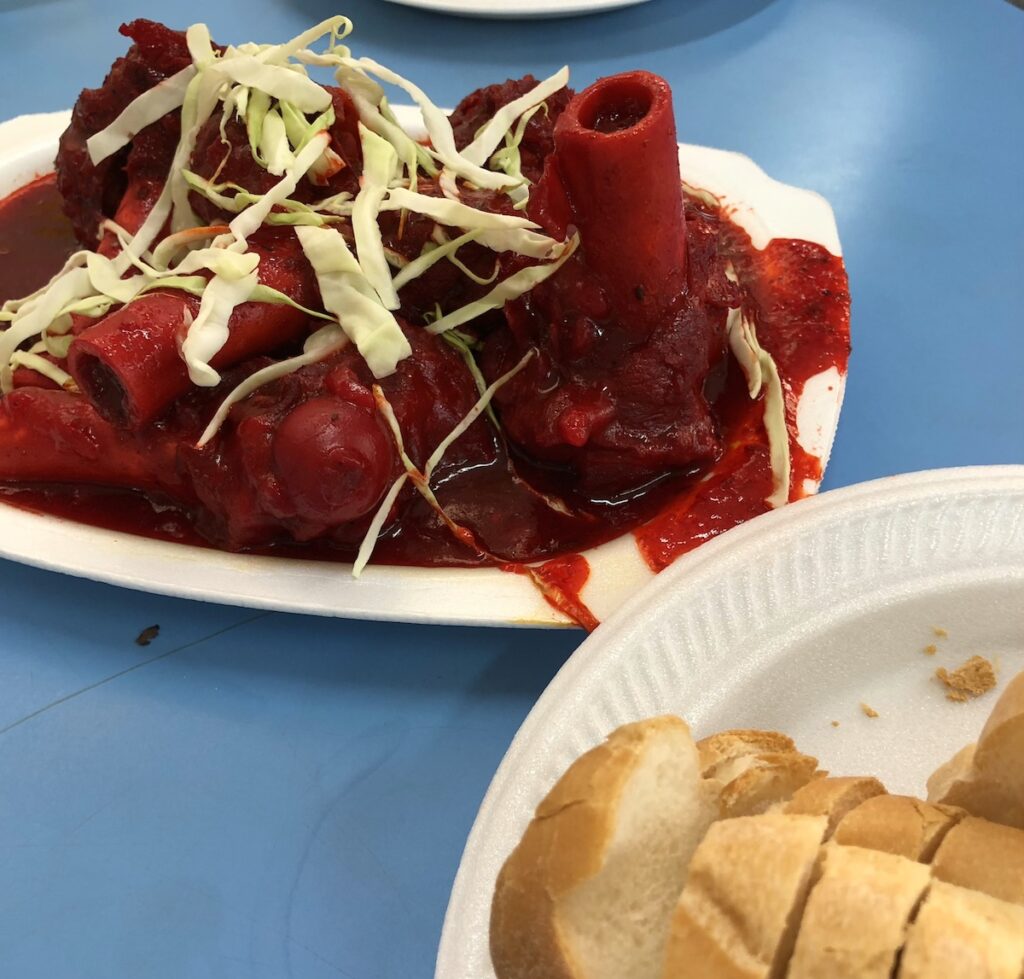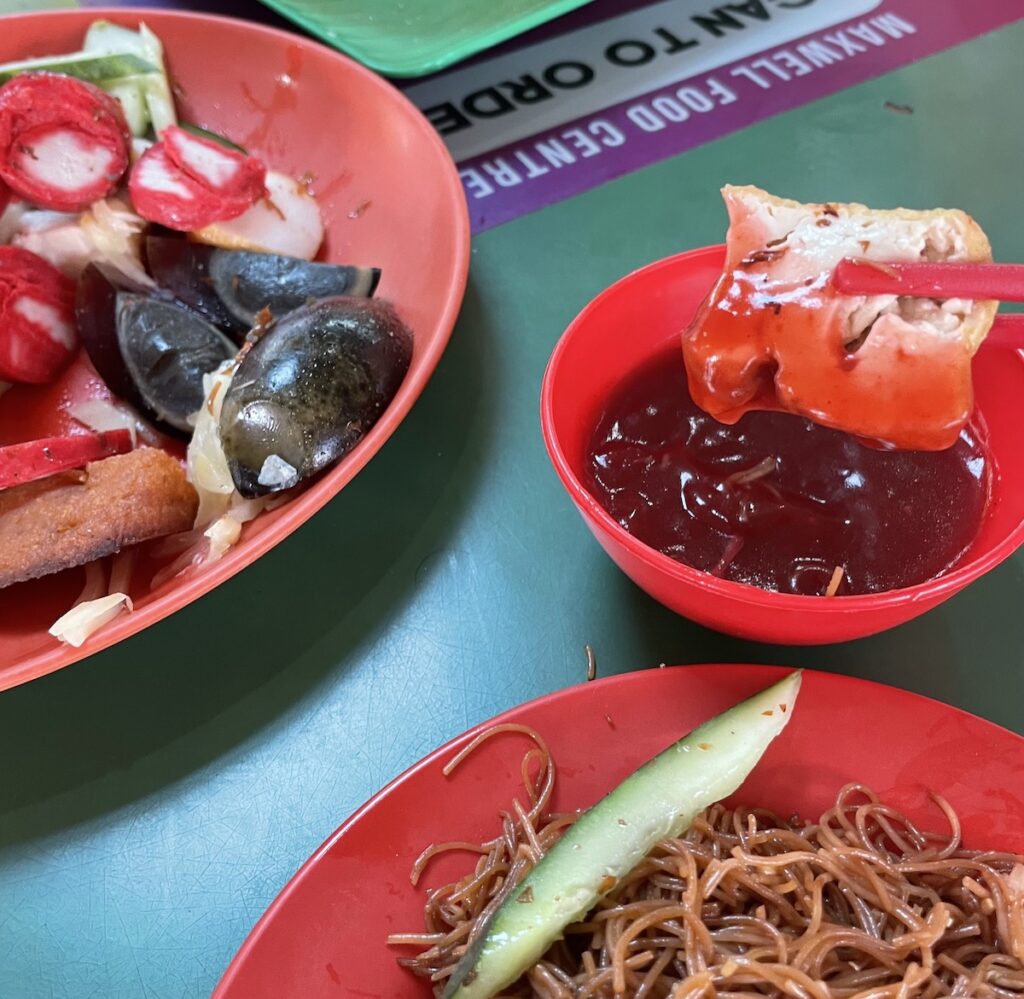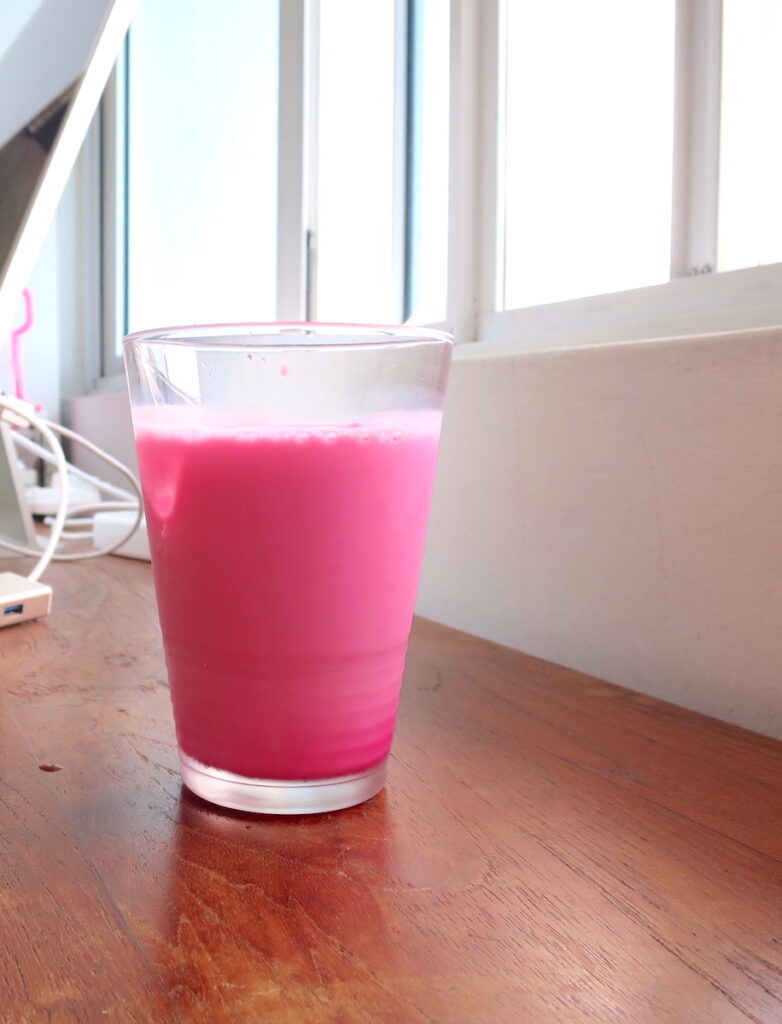TULANG MERAH
RED MUTTON BONES IN SPICY TOMATO BASED SAUCE COLOURED PINK

Translated as “Red Bones” in Malay, this dish of mutton leg bones in a spicy red tomato based sauce is from the Indian Muslim community. Its origins can be traced back to the 1950s at a stall in Kampong Glam. Red colouring is added to give the dish its dramatic pink colour. Where to eat: Deen Tiga Rasa (three generations of tulang merah deliciousness), Golden Mile Food Centre #B1-16, 505 Beach Road, Singapore 199583
WU XIA XIANG BING
IT'S THAT SAUCE!
FIVE SPICE PRAWN FRITTER


Wu Xiang also known as ngoh hiang in Hokkien refers to the deep fried five-spice pork roll. But the dish, Wu Xia Xiang Bing, which originated in Fujian, China, consisted of only 5 items back then, hence its name: ngoh hiang (five-spice pork roll), pork liver rolls, egg rolls, pork sausage and prawn fritters.
Finding its way to Singapore via immigrants, the dish added more and more items such as fishballs, beancurd, century egg, cuttlefish, yam rolls, pink pork sausage and fried bee hoon, with chilli sauce and sweet sticky pink sauce.
Depending on the stall, this sweet sticky sauce sometimes takes on an alien shocking pink hue that attracts you from afar. The sauce is made of pandan, sugar, water, egg white, pink colouring and corn starch. It balances the overall saltiness of the items in the dish. Where to eat: Hup Kee Wu Xiang Guan Chang, Maxwell Food Centre #01-97, 1 Kadayanallur Street, Singapore 069184
TEOCHEW PNG KUEH
SAVOURY STEAMED GLUTINOUS RICE DUMPLING FILLED WITH PORK, PEANUTS, MUSHROOM AND GLUTINOUS RICE

Photograph by Choo Yut Shing
Known as Poong Tor meaning peach dumplings in Teochew, Png Kueh is shaped like a peach as the Teochews regard the fruit as a symbol of immortality in their myths and offerings to gods. Where to eat: Poh Sheu Soon Kueh and Ang Ku Kueh, 127 Bukit Merah Lane 1, #01-222, Singapore 150127 (near Alexandra Village Food Centre).
BANDUNG
CHILLED DRINK OF ROSE SYRUP CORDIAL STIRRED WITH EVAPORATED MILK OR COCONUT MILK AND TOPPED WITH ICE

Bandung drink does not originate in the city of Bandung in Indonesia as I thought. The drink means “pairs” or “joined” referring to its ingredients of rose syrup and milk. It has roots in British colonial Singapore in the early 20th century. Whether it was invented by a British gentleman or by someone in the Malay community is not clear. Today bandung is popular throughout Southeast Asia, and is sold in cans and bottles, and as ice cream. For a rich kick try bandung cino – bandung drink topped with whipped cream. Where to drink: S.Ibrahimmusa Drink Stall, Ayer Rajah Food Centre #01-56, 503 West Coast Drive, Singapore 120503